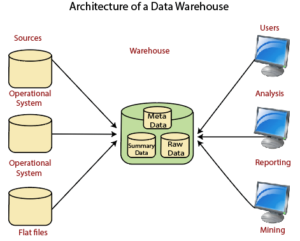The next decade will witness transformative shifts in the IT industry, driven by groundbreaking advancements in artificial intelligence. Generative AI, capable of autonomously creating text, images, and music, is revolutionizing media and content creation, enabling unprecedented levels of creativityRead more
The next decade will witness transformative shifts in the IT industry, driven by groundbreaking advancements in artificial intelligence. Generative AI, capable of autonomously creating text, images, and music, is revolutionizing media and content creation, enabling unprecedented levels of creativity and efficiency. Alongside this, the emphasis on AI ethics and regulation is growing, as industries strive to ensure responsible AI deployment by mitigating biases and complying with evolving legal frameworks. Explainable AI is becoming essential, particularly in sectors like healthcare and finance, where transparency in AI decision-making is crucial for trust and compliance.
AI’s integration into edge computing is set to enhance data privacy and reduce latency, crucial for the burgeoning Internet of Things (IoT) and mobile applications. Furthermore, AI-driven automation is poised to streamline processes across various industries, from manufacturing to customer service, leading to significant cost reductions and efficiency gains. In the realm of cybersecurity, AI is being leveraged for advanced threat detection and response, providing robust protection against increasingly sophisticated cyber threats.
Advancements in natural language processing (NLP) are enhancing human-computer interaction, enabling more sophisticated chatbots and virtual assistants that improve user experience. The healthcare sector is witnessing a revolution, with AI facilitating breakthroughs in diagnostics, personalized medicine, and drug discovery, ultimately improving patient outcomes. AI is also at the forefront of sustainability efforts, contributing to environmental monitoring and resource management.
Lastly, the exploration of quantum AI presents the potential to solve complex problems far more efficiently than classical approaches, promising to redefine AI capabilities. These trends signify a profound impact on the IT industry, driving innovation, creating new business opportunities, and reshaping technological integration in daily life.
See less


Encryption protects data by transforming it into an unreadable format using mathematical algorithms and keys. Here is a simplified process: Plaintext: The original, readable data that needs to be protected. Encryption Algorithm: A set of complex mathematical rules (e.g., AES, RSA) used to transformRead more
Encryption protects data by transforming it into an unreadable format using mathematical algorithms and keys. Here is a simplified process:
The original, readable data that needs to be protected.
A set of complex mathematical rules (e.g., AES, RSA) used to transform plaintext into ciphertext.
A secret string of bits that the algorithm uses to encode the plaintext into ciphertext.
The encrypted, unreadable data resulting from the encryption process.
Types of Encryptions:
– Uses the same key for both encryption and decryption.
– Requires both the sender and receiver to share the key secretly.
– Example: AES (Advanced Encryption Standard).
– Uses a pair of keys: a public key for encryption and a private key for decryption.
– Enhances security by ensuring only the holder of the private key can decrypt the data.
– Example: RSA (Rivest-Shamir-Adleman).
Workflow:
– The sender uses an encryption algorithm and key to convert plaintext into ciphertext.
– The recipient uses the decryption algorithm and the correct key to revert ciphertext back to plaintext.
Use Cases:
Encryption secures data by converting it into an unreadable format using mathematical algorithms and keys.
See less